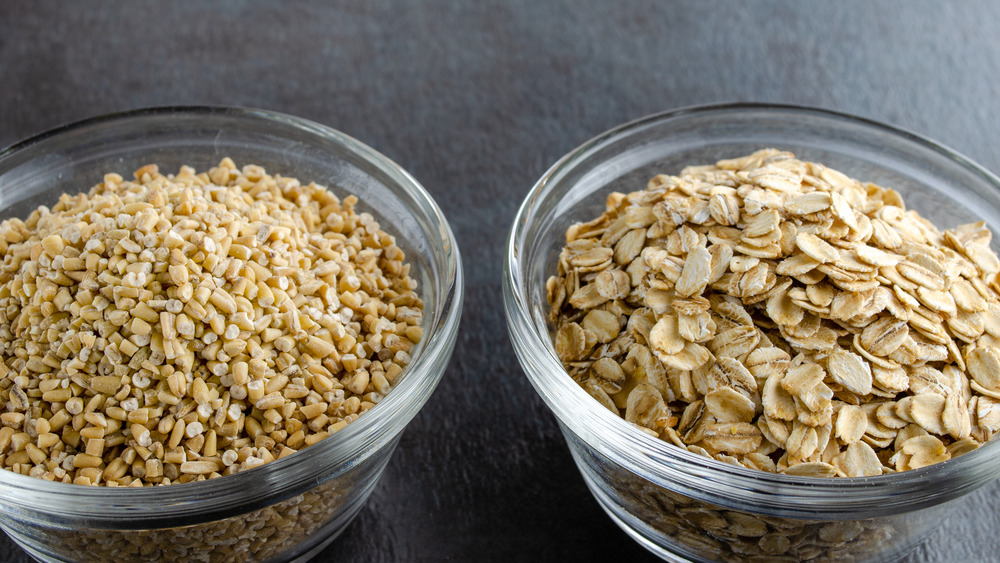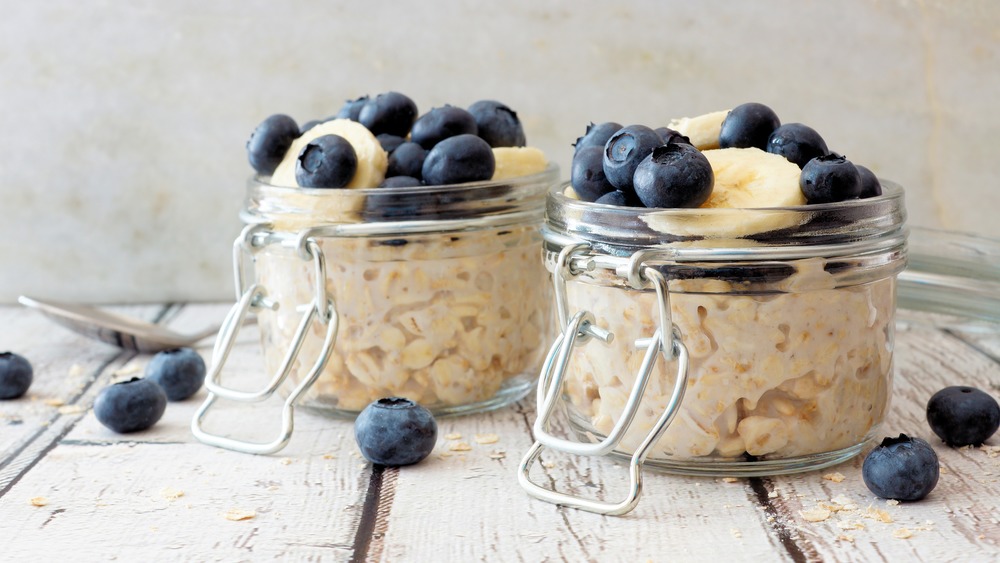Rolled Vs Steel Cut Oats: Which One Is Better For You?
Oatmeal for breakfast seems plain and simple, right? Healthy, easy to make, and generally a no-fuss choice. But if you have noticed lately that the formerly-bland oats aisle in your favorite grocery store seems to be growing along with the options, it's is not just your eyes playing tricks on you. In fact, Fortune Business Insights is reporting continuous consumer growth in the oat market since 2016. This is due to the rise of popularity in organic oat-based food products, alternative oat-based dairy drinks, and flours. Yes, the aisle is becoming a little crowded.
Before we can start our research and jump into a big pile of oats, it's important to start with the basics: steel-cut versus rolled oats. What's the difference, and which one is better for you?
According to Healthline, they are both winners of nutrition awards. A two-thirds cup of both varieties is similar in calories (steel-cut has 208 and rolled oats have 212), and the two have almost the same amount of carbs (29 grams for rolled oats, and 37 for steel-cut). Each contains 4 grams of fat, and rolled oats roll in with 7 grams of protein, while steel-cut is a cut above the competition with 9 grams of protein.
You may have to make your choice based on taste
We know they are both nutritious choices to grab off the shelves, but be careful of what you are buying. Healthline recommends making sure neither of the options you choose doesn't have any additional sugar added to them.
Considering their nearly twin-like nutritional labels, you may decide to base your choice on flavor and how they are made. According to Nuts, steel-cut oats are created when the large oat grain, also known as the oat groat, is sliced with steel. Rolled oats are made when the large oat grain is flattened using large disks. The steel-cut version of the oat is larger, giving it a longer cooking time and a slightly more chewy texture. There is also a distinct nutty taste that is not as prevalent in rolled oats. Rolled oats are thinner, quicker to absorb liquid, and have a more mushy texture than their steel-cut counterpart.
Again, both types of oats are excellent nutritional choices, although Healthline does note that steel-cut oats may have more fiber and a lower glycemic index. The decision can really come down to which one you prefer, and we find it's always a relief to compare two good-for-you options. Just be aware of the added sugar lurking in the crowded oats aisle.


